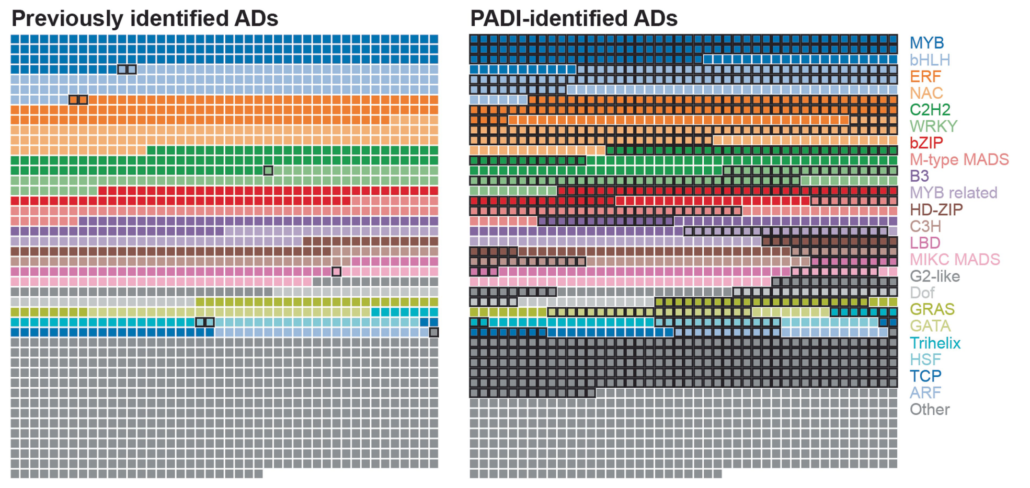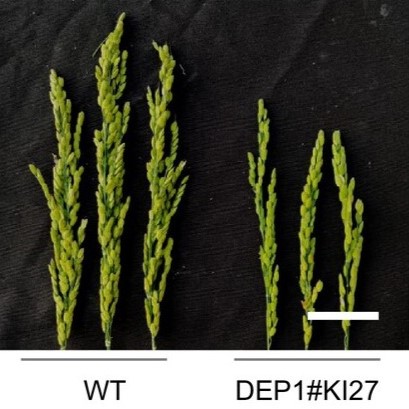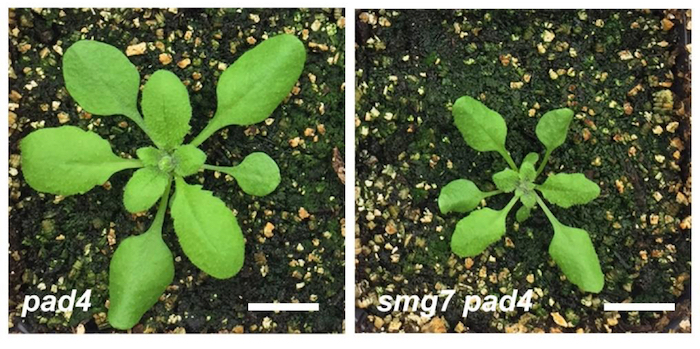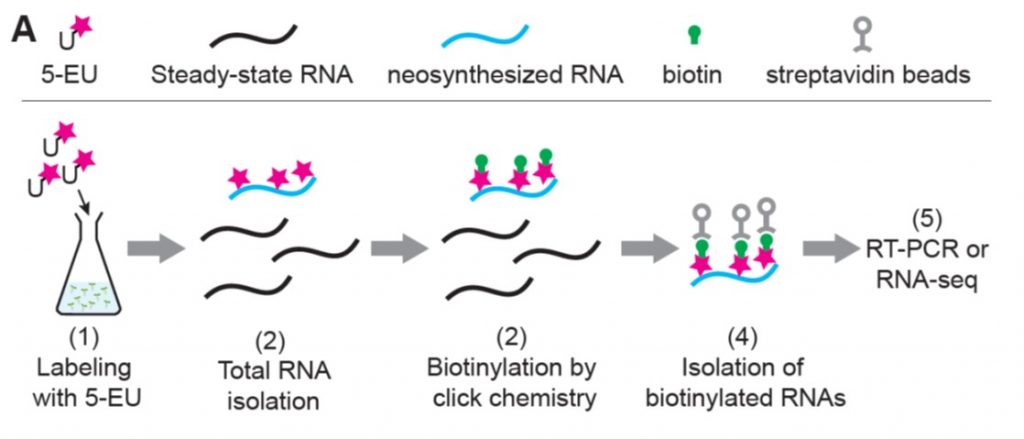
Spatially resolved, single-cell multi-omics atlas of soybean development
Plant Science Research WeeklyIn this exciting paper, Zhang, Luo, Marand et al. combined several powerful techniques to investigate the program underlying soybean seed development. They used RNA sequencing to profile gene expression from single nuclei (snRNA-seq). They also carried out single-cell sequencing of assays for transposase-accessible…

Identification of plant transcriptional activation domains
Plant Science Research WeeklyActivation domains (AD) are parts of transcription factor proteins (TFs) that bind the transcriptional machinery (coactivator complexes) and lead to transcriptional activation. However, identifying ADs is challenging because they are often part of intrinsically disordered regions, which lack a defined…

Gene knock-down using gene editing
Plant Science Research WeeklyAn efficient method of gene downregulation, where gene expression is reduced but not completely knocked out, is useful for crop improvement. Here, Shen et al. have developed a system to achieve this, by using CRISPR/Cas9 to insert an element containing a Kozak sequence and an ATG start codon just before…

Misexpression of a MADS-box gene results in longer glumes and grains in wheat
The Plant Cell: In a NutshellAdamski et al. reveal that the expression of a MADS-box transcription factor is the basis for a grain phenotype observed in Polish wheat. Plant Cell https://doi.org/10.1093/plcell/koab119
By Cristobal Uauy and Nikolai M Adamski
John Innes Centre, Norwich NR4 7UH, United Kingdom
Background:…

Mini foxtail millet as a new C4 model species (Nat. Plants) ($)
Plant Science Research Weekly
The three most widely adopted plant models all use C3 photosynthesis, but discoveries made in these plants are not always applicable to C4 plants. Foxtail millet (Setaria italica) has been emerging as a potential C4 model species, but its use for genomics research is challenging due to long generation…

The Multifaceted Roles of UPF1 in Gene Regulation
Blog, Research, The Plant Cell, The Plant Cell: In a NutshellRaxwal et al. uncover the roles of the RNA helicase and ATPase UPF1 in regulating gene expression. The Plant Cell (2020) https://doi.org/10.1105/tpc.20.00244
By Vivek K. Raxwal and Karel Riha
CEITEC Masaryk University, Brno, Czech Republic
Background: Gene expression, i.e., the…

The key role of terminators on the expression and post-transcriptional gene silencing of transgenes (Plant J.)
Plant Science Research WeeklyTransgene introduction has been a major tool in modern plant science, but the ability of plants to distinguish ‘self’ from ‘non-self’ can lead to transgene silencing. This mechanism is mediated by the recruitment of RDR6 (an RNA-Dependent RNA polymerases) leading to the production of several…

Innovation, conservation, and repurposing of gene function in plant root cell type development (bioRxiv)
Plant Science Research WeeklyRoots have many specialized cells arranged in concentric circles that are functionally homologous among various plant species but with varying cell-type-specific developmental programs. To further understand these developmental programs, Kajala et al. performed TRAPseq (Translating Ribosome Affinity…

Metabolic labeling of RNAs uncovers hidden features and dynamics of the Arabidopsis transcriptome (Plant Cell)
Blog, Plant Science Research WeeklyThe ability to directly sequence RNAs (RNA-seq) has revolutionized our understanding of gene expression, but it can miss or underestimate short-lived RNAs. Several methods have been developed to identify newly-synthesized mRNAs to provide a snapshot of transcription as it happens. Szabo present Neu-seq,…

